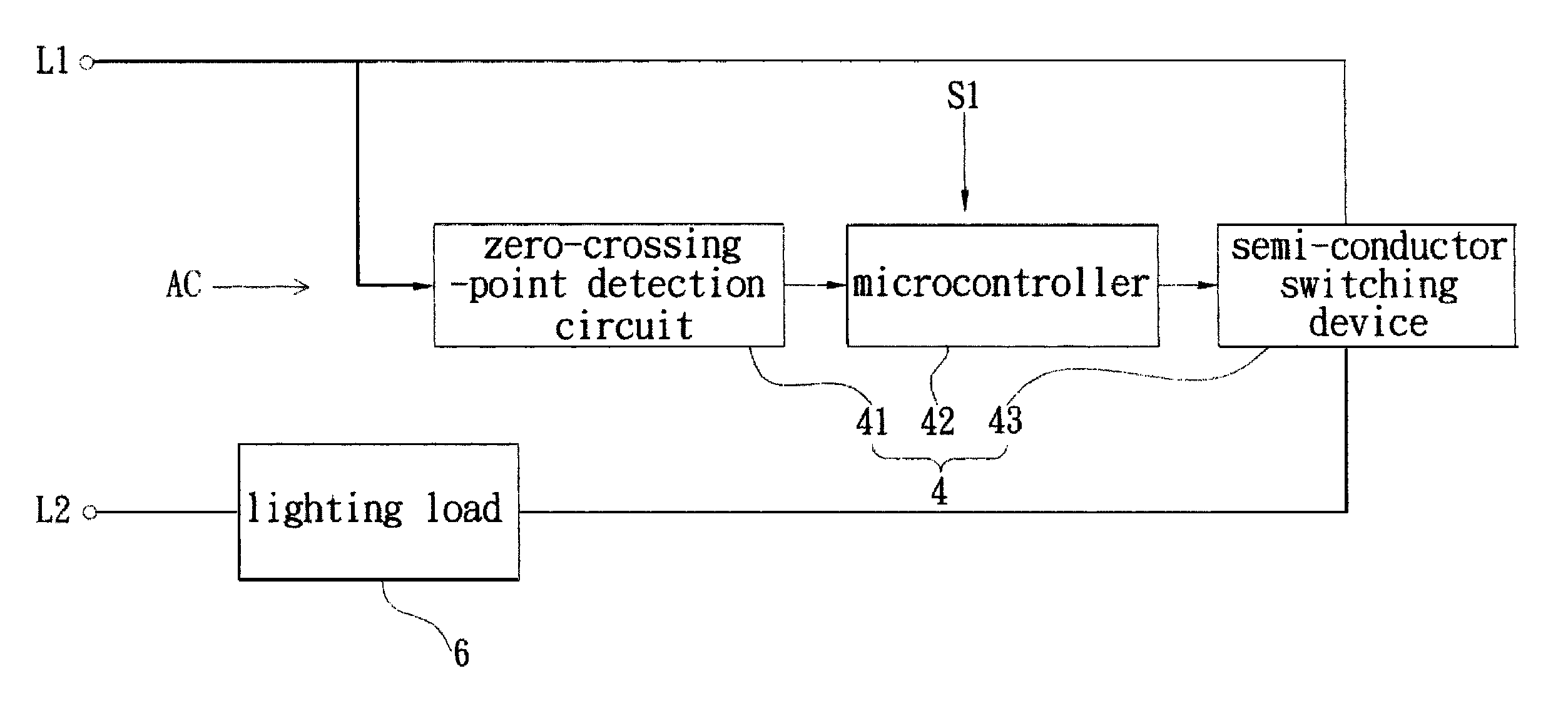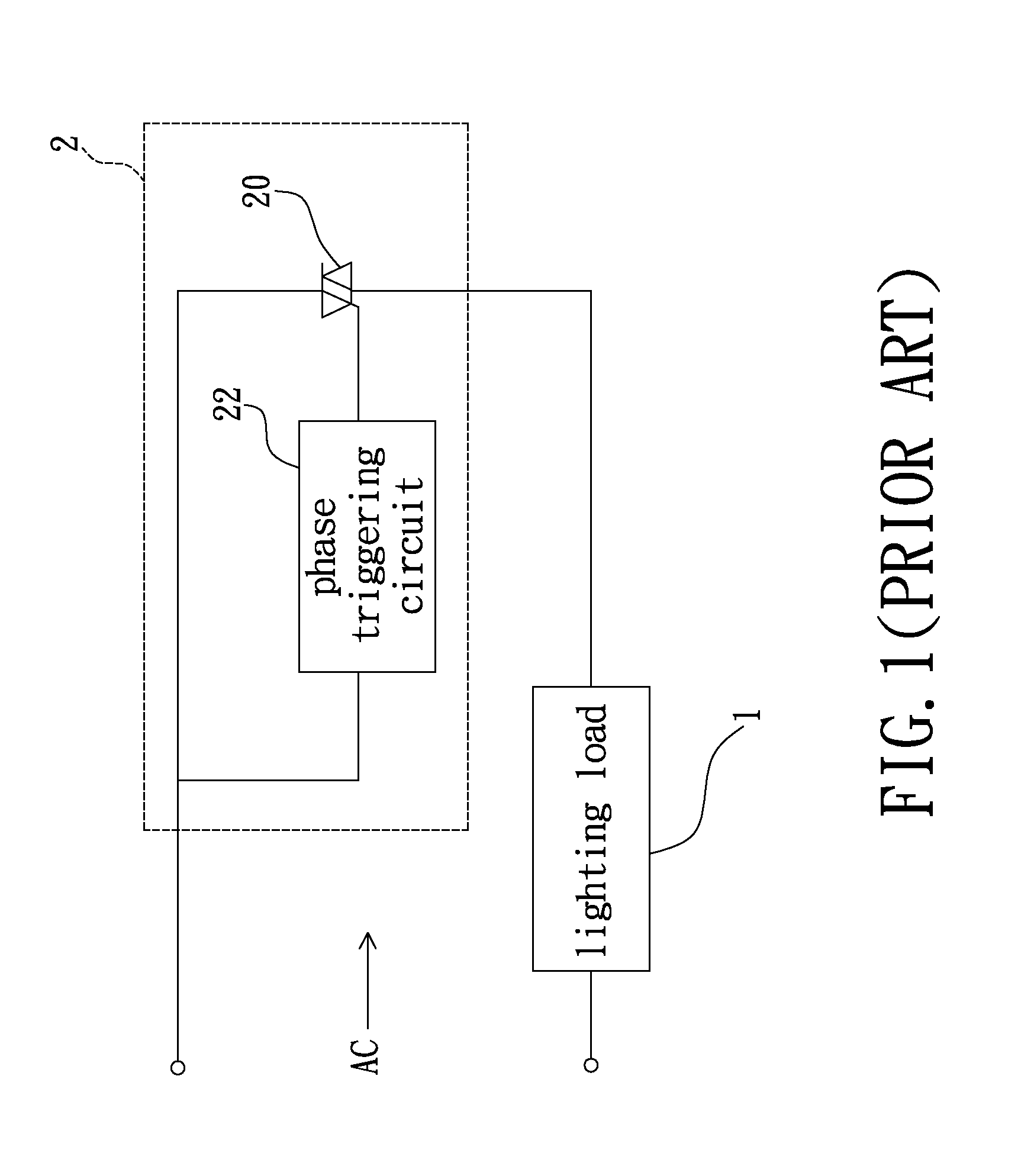Microcontroller-based lighting control system and method for lighting control
a microcontroller and control system technology, applied in lighting devices, electroluminescent light sources, light sources, etc., can solve the problems of inability to substantially adjust the turn-on period of bi-directional control switches such as triac, inability to achieve the effect of implementing more desirable functions, and inability to easily combine structures using variable resistors to control light intensity to achieve more desirable functions
- Summary
- Abstract
- Description
- Claims
- Application Information
AI Technical Summary
Benefits of technology
Problems solved by technology
Method used
Image
Examples
first embodiment
[0028]Reference is made to FIG. 2 showing a schematic diagram of a lighting control system in accordance with the present invention. The lighting control system substantially includes a zero-crossing-point detection circuit 41, a microcontroller 42, and a semi-conductor switching device 43. The components 41, 42 and 43 form a fundamental lighting control circuit 4.
[0029]Furthermore, the lighting control system is provided with an external control signal S1 which is fed by mechanical or electronic means to the microcontroller 42. Reference is made to FIG. 2. One terminal of the semi-conductor switching device 43 is connected to a wire L1 of an AC power. The other terminal of the device 43 is connected to one end of the lighting load 6, which has its other end connected to another wire L2 of the AC power. Further, the semi-conductor switching device 43 has a third terminal coupled to the microcontroller 42 for receiving trigger control signals. This type of lighting control system in ...
second embodiment
[0061]Reference is made to FIG. 8, which shows a schematic diagram of the lighting control system in accordance with It adopts an electronic means to transmit the external control signal S1 to the microcontroller 42 for selecting an external control loop. The program codes of the microcontroller 42 then executes a time-delay pulse subroutine according to a scheme of FIG. 7. After that, the zero-crossing-point time-delay pulses with different time lags tD are generated and used for controlling the turn-on period of the semi-conductor switching device 43. In FIG. 8, the microcontroller 42 is coupled to an output terminal of the detection circuit 7. This detection circuit 7 can be a motion detection circuit, a daylight detection circuit, or a sound detection circuit, or any one of their combinations.
[0062]Similar to the aforementioned mechanical means, it is appropriately to set an effective external control signal S1 as zero voltage that may be a temporary ground signal. The detectio...
PUM
 Login to View More
Login to View More Abstract
Description
Claims
Application Information
 Login to View More
Login to View More - R&D
- Intellectual Property
- Life Sciences
- Materials
- Tech Scout
- Unparalleled Data Quality
- Higher Quality Content
- 60% Fewer Hallucinations
Browse by: Latest US Patents, China's latest patents, Technical Efficacy Thesaurus, Application Domain, Technology Topic, Popular Technical Reports.
© 2025 PatSnap. All rights reserved.Legal|Privacy policy|Modern Slavery Act Transparency Statement|Sitemap|About US| Contact US: help@patsnap.com



